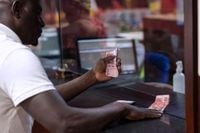South Africa's consumer inflation rate edged up slightly to 3% in June 2025, marking a modest increase from the 2.8% recorded in both April and May, according to the latest figures released by Statistics South Africa (Stats SA). While this rise remains within the South African Reserve Bank’s (SARB) inflation target band, it signals a renewed pressure on household budgets, driven primarily by escalating food costs and utility price hikes.
The uptick in inflation was largely propelled by soaring prices in the food and non-alcoholic beverage sectors, which recorded their highest inflation rate in over a year at 5.1%. This represents the steepest climb in 15 months, underscoring the growing strain on consumers. Meat prices, in particular, experienced significant surges, with stewing beef prices climbing by more than 21% year-on-year, the highest spike on record. This sharp increase has been partly attributed to supply constraints caused by outbreaks of foot-and-mouth disease, which have disrupted livestock availability and driven up costs.
Patrick Kelly, Stats SA’s Chief Director for Price Statistics, highlighted the persistent inflationary pressures on fresh produce, noting that “The annual rates for fruits & nuts and vegetables remained in double-digit territory for a second straight month.” Among the products that saw sharp price increases over the 12 months leading to June were beetroot, lettuce, and carrots. Interestingly, peanuts bucked the trend, becoming slightly cheaper compared to the previous year. Several dairy products also saw price declines, providing some relief amid the broader inflationary environment.
Food inflation was not the only factor pushing the consumer price index (CPI) upward. Household electricity and gas prices were 11% higher than a year ago, reflecting recent increases in tariffs by Eskom, the national power utility. Direct Eskom customers, including many households relying on pre-paid electricity meters, faced tariff hikes in April 2025, while municipal power tariffs increased in July. These utility cost rises contributed to a 0.5% month-on-month increase in the housing and utilities category in June, with rent prices also rising by 1% over the same period.
Despite these pressures, fuel prices provided some respite in June, dropping more than 11% compared to the same period last year. This decline helped temper the overall inflation figure, though this relief was short-lived. In July, fuel prices surged again following geopolitical tensions sparked by Israeli and US attacks on Iran, which triggered a spike in global oil prices. This reversal is expected to add further inflationary pressure in the coming months.
Meat prices, beyond the dramatic increases in stewing beef, rose by 2.2% from May to June and were nearly 7% higher than a year earlier. The impact of foot-and-mouth disease has been a key driver of these increases, limiting supply and pushing prices upwards. Additionally, fruit and vegetable prices surged by more than 13% over the past year, while hot beverages became 10.1% more expensive, further contributing to the rising cost of living.
The inflation data for June 2025 aligns with expectations and is poised to influence monetary policy decisions. Economists and market watchers anticipate that the South African Reserve Bank’s Monetary Policy Committee will consider cutting the repo rate by 25 basis points to 7% at its meeting scheduled for Thursday, July 31, 2025. This potential rate cut is supported by the fact that inflation expectations among South African households, businesses, and unions have cooled to an almost four-year low. The Bureau for Economic Research’s latest survey showed inflation expectations over the next two years have dropped to 4.5%, a positive sign that inflationary pressures may ease.
Lower inflation expectations are crucial because they help prevent a wage-price spiral, where workers demand higher wages to keep up with anticipated price rises, prompting businesses to increase prices to cover higher labor costs. By anchoring expectations closer to the Reserve Bank’s target, the economy can avoid entrenched inflationary cycles.
Since 2016, the SARB has operated with an inflation target band of 3% to 6%, but recent policy discussions have focused on aiming for a lower target of 3% to better stabilize prices and support economic growth. The June inflation figure, while slightly higher than May’s, remains at the bottom edge of the current target band, reinforcing the case for a cautious easing of monetary policy to stimulate growth without risking a resurgence of inflation.
South Africa’s inflation dynamics reflect a complex interplay of factors. On one hand, supply disruptions in key sectors like meat due to diseases have tightened markets and pushed prices up. On the other, temporary relief from falling fuel prices and easing inflation expectations offer some hope for consumers and policymakers alike. However, the recent surge in fuel prices following geopolitical events highlights the vulnerability of the economy to external shocks.
As households grapple with rising costs in essential goods such as food, utilities, and rent, the government and the Reserve Bank face the delicate task of balancing inflation control with the need to support economic recovery. The forthcoming monetary policy decision will be closely watched as an indicator of how South Africa aims to navigate these competing pressures in the months ahead.

